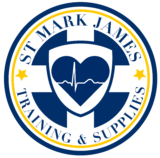Subacromial bursitis triggers symptoms strikingly the same as supraspinatus tendinitis with shoulder pain at a 60-degree arc if the arm is raised sideways.
https://www.youtube.com/watch?v=eDggmARFY5s
It is important to note that the supraspinatus muscle travels throughout the top part of the shoulder blade and links via the tendon at the upper part of the arm. This muscle is utilized to raise the arm sideways and vital in throwing sports.
The condition can occur after a heavy fall onto the shoulder. One is also at risk for the injury if the shoulder is overused especially in sports when the arm is at or higher than shoulder level. In addition, there is also a risk if the individual previously had a ruptured supraspinatus tendon.
What are the indications?

The indications of subacromial bursitis include the following:
- Pain and weakness in the arm especially when raised sideways through a 60-degree arc.
- Pain is triggered if the interior front of the upper arm is pressed.
- If the tendon is damaged, there is pain when the arm is raised sideways against resistance
Management of subacromial bursitis
Adequate rest is vital until the pain has settled. Remember that movement triggers shoulder pain thus recovery might take a longer time since the bursa is inflamed and swollen.
If possible, the individual can continue with mobility exercises if free from pain to maintain the full range of movement in the shoulder. This is vital in preventing the loss of movement in the shoulder and muscle weakness.
Cold therapy can be used to minimize the inflammation and pain. An ice pack must be applied every hour for at least 10 minutes and steadily reduced as needed.
Medical care
Anti-inflammatory medications such as ibuprofen is prescribed by the doctor. A rehabilitation program is also started which includes mobility and strengthening exercises. If the conservative measures are not effective, the doctor might decide to extract the fluid using a needle that is inserted into the bursa.
